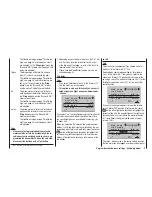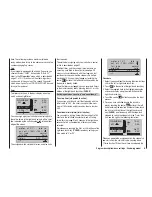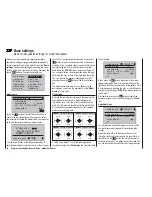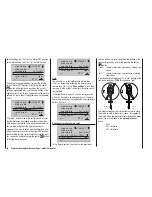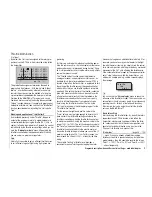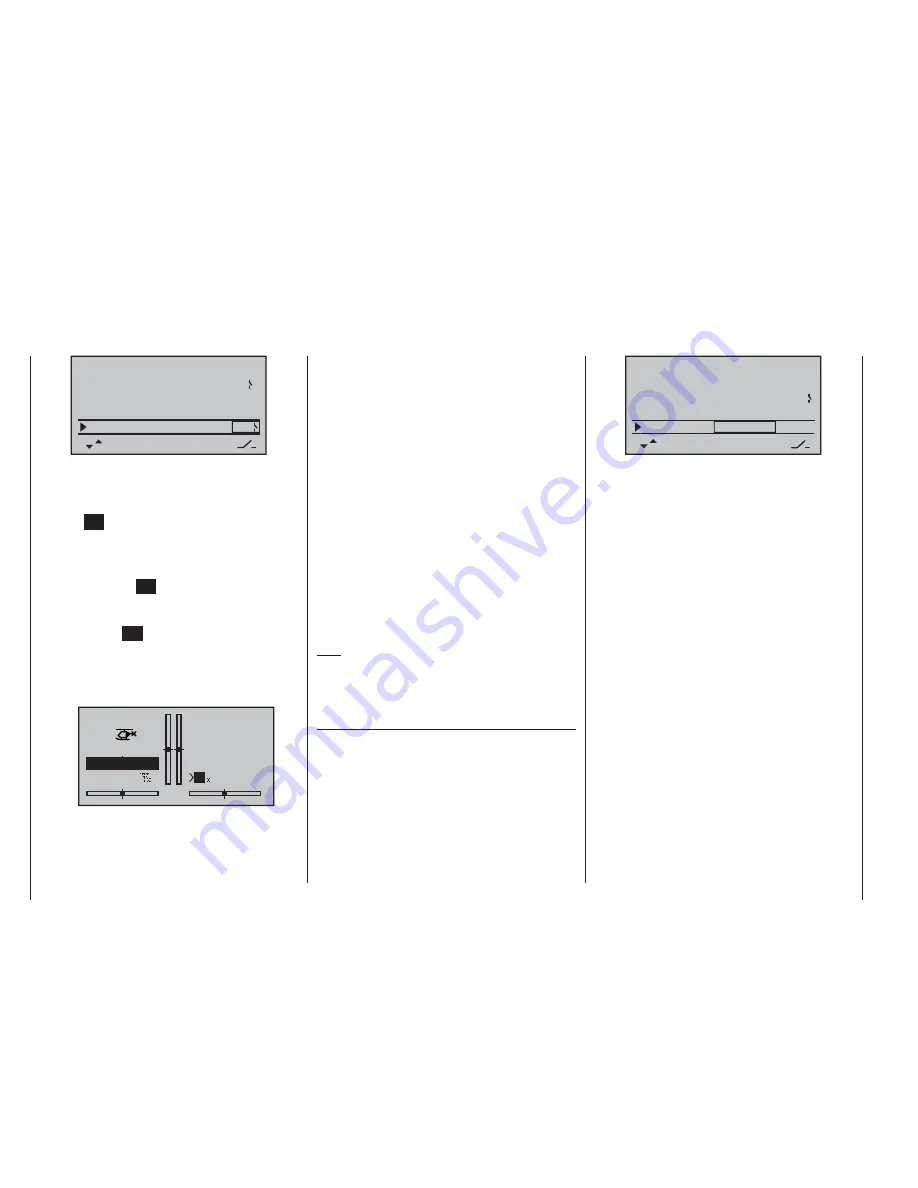
68
Program description: base settings - model helicopter
rotor direct
swashplate
right
3sv(2rol)
cut off
–125% +100% 1
pitch min
rear
timer
10:01
G3
Procedure
Select the desired input fi eld using the arrow buttons
1.
ef
of the left or right-hand touch-key.
Touch
2.
SET
in the centre of the right-hand touch-key.
Select the required time in the highlighted minutes
3.
and seconds fi elds using the arrow buttons of the
right-hand touch-key.
Touch the central
4.
SET
button to conclude the input
process.
Switch back to the basic display by repeatedly touch-
5.
ing the central
ESC
button of the left-hand touch-key.
With the stopwatch halted, press the
cd
buttons of
the right-hand touch-key simultaneously (
CLEAR
) to
switch the stopwatch to the “Timer” function; see top
right in the next illustration:
STARLET
#02
0:00h
stop
flt
10:01
0:00
0.0V
6.1V
HoTT
M
99%
If you now operate the assigned switch, the stopwatch
starts from the set initial value,
counting down
(“Timer
function”). When the set time has elapsed, the timer
does not stop, but continues to run to allow you to read
off the time elapsed after reaching zero. To make this
clear, the over-run time is shown highlighted (black
background).
Sequence of sounds
30 sec. before zero: triple beep
single beep every two seconds
20 sec. before zero: double beep
single beep every two seconds
10 sec. before zero: single beep
single beep every second
5 sec. before zero: single beep every second at higher
rate
zero: longer beep; display switches to
inverse video
The “alarm timer” is reset by simultaneously pressing
the
cd
or
ef
buttons of the right-hand touch-key
(
CLEAR
) after you have halted the timer.
Note:
A count-down timer is indicated in the basic display by
a fl ashing colon (:) between the minutes fi eld and the
seconds fi eld.
Phase 2 / Phase 3
You will automatically be in the “normal” fl ight phase 1
unless you have already assigned a switch to phases 2
or 3.
Both the number and name of this fl ight phase are fi xed
permanently as “normal”, and cannot be changed. For
this reason the “normal” phase is simply concealed, i. e.
it is not displayed as phase 1.
10:01
G3
phase 2
phase 3
hover
speed
–––
–––
rotor direct
right
pitch min
rear
timer
It is also important to understand that the fl ight phases
have their own inherent priorities which need to be ob-
served, particularly when assigning individual switches.
The underlying scheme can be described as follows:
If all assigned fl ight phase switches are closed or
•
open, the “normal” fl ight phase is active.
If only one switch is closed, then the fl ight phase as-
•
signed to the currently closed switch is active.
If two switches are closed, then the fl ight phase with
•
the lower number is active.
For example, this would be phase 2 if the switches
assigned to phase 2 and 3 are closed.
The “auto-rotation phase” ALWAYS has precedence
•
over all other fl ight phases, regardless of the priori-
ties outlined above. When the auto-rotation phase
is selected, the switch is always made WITHOUT
DELAY.
With this in mind, you may wish to take the inherent
•
phase priorities into account when assigning names
to the fl ight phases; see below.
At the servo end the transition does not occur
•
“abruptly”, but with a fi xed transition period of about
one second.
Programming
When you select “Phase 2” or “Phase 3” using the arrow
buttons
cd
of the left or right-hand touch-key, the
Summary of Contents for mx-16 HOTT
Page 7: ...7 For your notes...
Page 37: ...37 For your notes...
Page 41: ...41 For your notes...
Page 45: ...45 For your notes...
Page 51: ...51 For your notes...
Page 55: ...55 For your notes...
Page 81: ...81 For your notes...
Page 103: ...103 For your notes...
Page 133: ...133 For your notes...
Page 141: ...141 For your notes...
Page 161: ...161 For your notes...
Page 173: ...173 For your notes...




